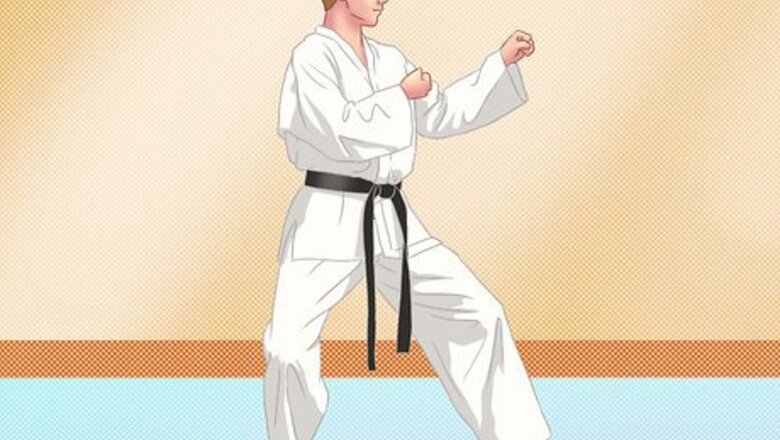
views
Assuming Your Fighting Stance
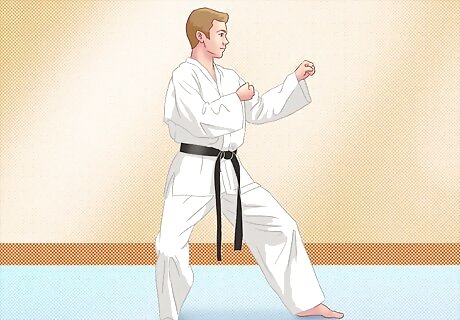
Stand with one foot facing forward. In Taekwondo, kicks are launched from the standard L-stance, where one foot will be placed in front of the other. It’s up to you which foot is in front, depending on whether the left or right side of your body is dominant. Your back leg will be your kicking leg, as it's going to snap out and perform the strike. Your front leg is your supporting leg, as it's going to be holding all of your body's weight as you pick your kicking leg off the ground and kick. If you favor your right hand, your right leg will most likely be your dominant leg. You'll want it to be your back leg, or kicking leg. If you favor your left hand, make your left leg your back leg, or supporting leg. Your front and back leg should be about one and half shoulder-widths apart. To reach this measurement, take your stance with your feet directly under your shoulders, then move your supporting leg front one step and your kicking leg back one step.
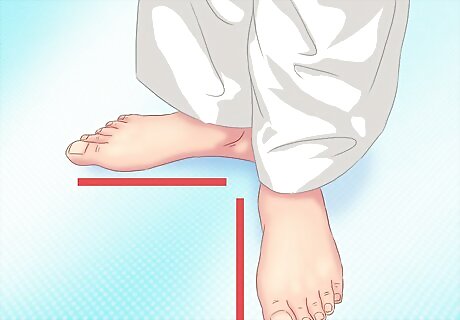
Line up your back foot. The name “L-Stance” comes from the L shape that you’ll make with your feet in this stance. Your front foot should face forward, and your back foot and leg should be turned out 90 degrees, placed about one foot behind the front foot. Your forward-facing supporting foot should be facing towards your target, getting ready to guide your kick in the right direction.
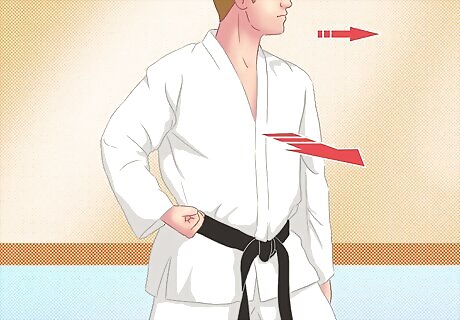
Position your trunk and head. With your feet in proper L stance, your body won’t be facing forward: it will be facing slightly outward in the direction that your back foot is pointed. You’ll want to be looking ahead, however, so point your head towards your opponent or target and focus on its direction. Face your trunk outward. Since your kicking foot is pointed about 90 degrees away from your body and your supporting foot is facing forward, this will leave your body pointing about 45 degrees diagonal towards your target. Try to keep an even smaller profile by rotating your trunk towards your back foot. The less your opponent can see of your body, the less they can hit. Face your head forward. While your torso is rotated at a 45 degree angle, you still need to be able to see! Face your head forward and keep your eye fixed on your target. This will help guide your kick.
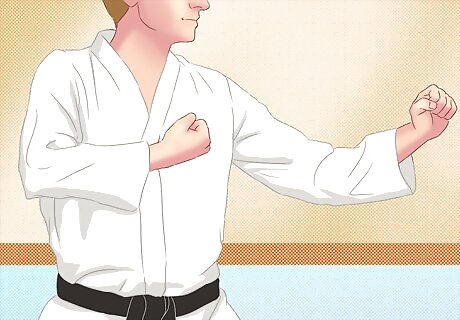
Position your arms. In most Taekwondo ready stances, you’ll want your arms out in front of you in a blocking position. Even though you won’t be punching, hold your hands in fists facing each other about a foot in front of your chest, with your elbows bent at 90 degree angles. Your arms will help you balance as you kick.
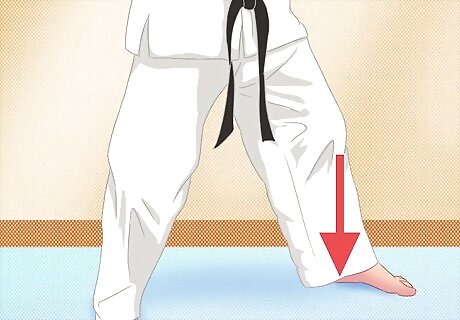
Shift your weight. Make sure about 75 percent of your weight is resting on your front foot. This will be important when you kick: you want as much weight off of your back foot as possible so that you can snap it upward quickly.
Lifting Your Front Leg
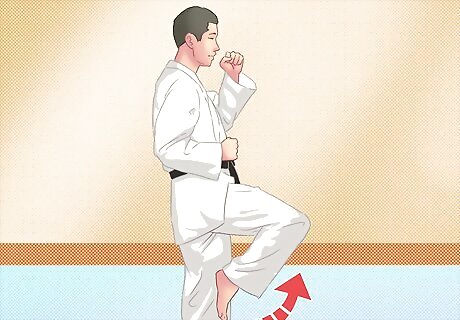
Lift your back knee. Lift it high enough so that the instep of your back foot is about level with your front knee. Hold this stance and get comfortable with your balance. You don’t want to fall over!
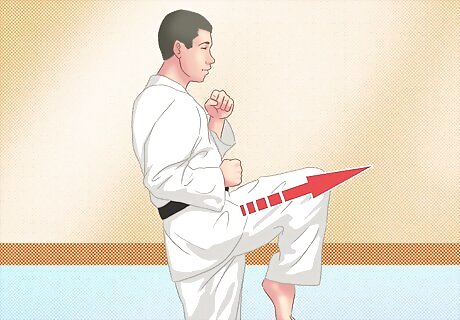
Point your knee towards your target. Your knee should be slightly above the exact point that you are aiming for, with your kicking foot stretched to become parallel to the ground. You may need to pull your arms closer to your body as you lift higher to maintain your balance.
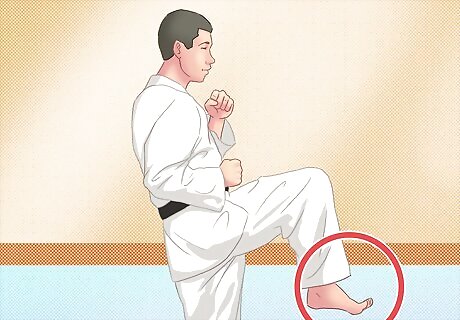
Pay attention to your kicking foot. Your back foot is the foot that you’ll be using to strike the target, so you’ll want to make sure that it’s in the right position. As you point your knee towards the target, pull your toes upward so that your foot is parallel to the ground, ready to deal the blow.
Executing the Front Kick
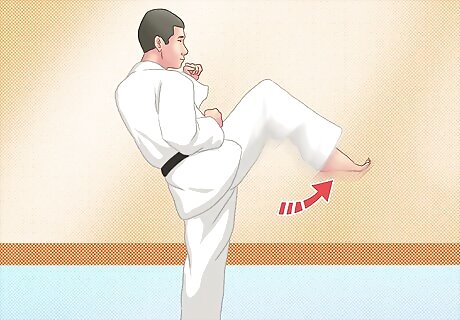
Snap your leg up. Snap your leg up at the knee with your toes pointed up. You want to get a lot of momentum going here: the more force and speed you put into the snap, the more force you’ll hit your target with.
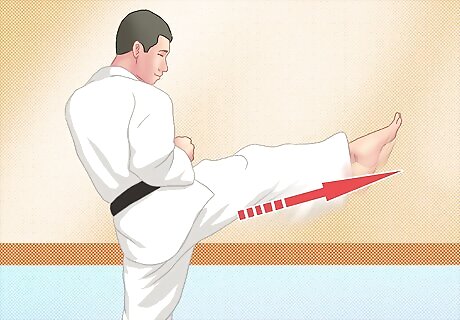
Strike the target! You want to hit the target with either the ball of your foot or your instep. Both are acceptable, and up to you or your instructor’s preference. The point of the kick is to cover as much area as possible to make as large an impact as you can. Just make sure that you’re not striking with your toes only! You could break or sprain them.
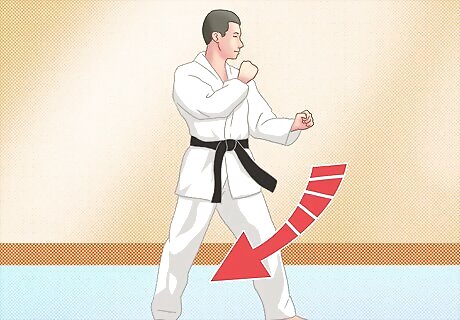
Pull your foot back. Return your foot back to the starting position, with your kicking foot and supporting foot in the “L-Stance”. Regain your balance and make sure that your arms are back down to their original position as well.
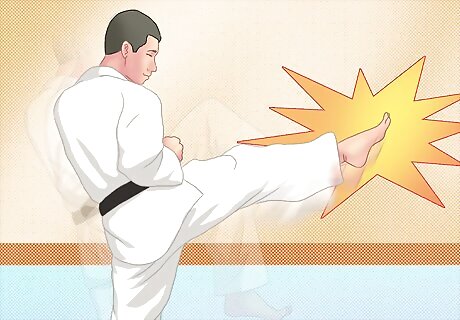
Practice! Make sure to repeat the steps in solo practice and in formal sparring matches. Work on your balance, your form, and the speed with which you snap your kick.



















Comments
0 comment